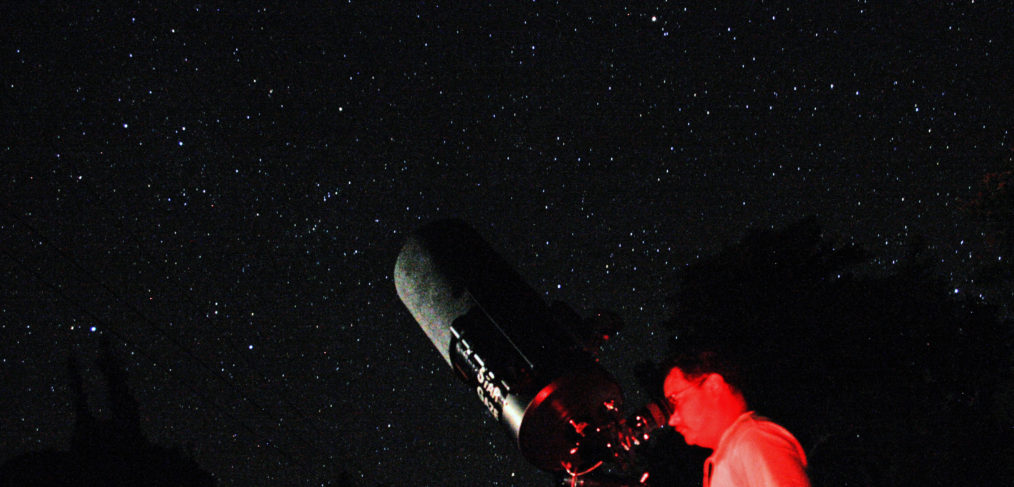Reasons Why Mounting is Important on a Telescope
Mounting is crucial when choosing the best telescope for viewing planets and galaxies because it significantly impacts the stability, ease of use, and overall observing experience. A telescope mount provides the support and movement control for the telescope, allowing you to point it accurately at celestial objects and track them as they move across the sky. Here are some key reasons why mounting is important:
Stability and Vibrations
A stable mount is essential for sharp and steady views. Vibrations and movements, even small ones, can greatly affect the quality of the observed image. A stable mount ensures that the telescope remains steady during observations, reducing image shake and improving image clarity.
Example: Consider two telescopes, Telescope K and Telescope L, both with similar apertures and focal lengths, but mounted on different types of mounts.
Telescope K: Aperture: 90mm Focal Length: 1000mm Mount: Manual Altitude-Azimuth (Alt-Az) Mount
Telescope L: Aperture: 90mm Focal Length: 1000mm Mount: Motorized Equatorial Mount
Explanation:
- Stability and Vibrations: Stability is a crucial factor in observing celestial objects, especially planets and galaxies, as it directly affects the clarity and sharpness of the observed image. Vibrations, even minor ones, can significantly degrade the viewing experience by causing the image to shake or blur.
- Altitude-Azimuth (Alt-Az) Mount: Telescope K is mounted on a manual Altitude-Azimuth (Alt-Az) mount. Alt-Az mounts move the telescope in two perpendicular axes: altitude (up and down) and azimuth (left and right). While Alt-Az mounts are straightforward to use and easy to set up, they can be more prone to vibrations, especially when manually adjusting the telescope’s position.
- Motorized Equatorial Mount: Telescope L is mounted on a motorized equatorial mount. Equatorial mounts are designed to align with the Earth’s axis of rotation, allowing for smooth and precise tracking of celestial objects as they appear to move across the sky. Motorized equatorial mounts automatically compensate for the Earth’s rotation, providing extended and accurate tracking without the need for constant manual adjustments.
- Impact on Observing Planets: When observing planets, stability is critical for viewing fine details on their surfaces. Planets, especially gas giants like Jupiter and Saturn, exhibit various features like cloud bands, atmospheric storms, and planetary rings. A stable mount, like the motorized equatorial mount on Telescope L, minimizes vibrations and allows for clear and steady views, revealing finer planetary details.
Telescope K, with its manual Alt-Az mount, may be more prone to slight vibrations when manually adjusting its position. This can impact the image quality and make it harder to see subtle features on planets, especially when using higher magnifications.
Impact on Observing Galaxies
Stability is also essential when observing faint and distant objects like galaxies. Telescope L’s motorized equatorial mount ensures smoother tracking, making it easier to keep galaxies centered in the field of view for longer periods. This stability is crucial, especially during astrophotography, as it reduces the risk of blurry or trailed images caused by mount-induced vibrations.
Astrophotography Considerations
If you’re interested in astrophotography, a stable mounting system is even more critical. Long exposure times for capturing deep-sky objects require absolute stability to avoid blurring in the final images. Telescope L’s motorized equatorial mount is better suited for astrophotography due to its precise tracking and minimal vibrations.

Tracking Celestial Objects
The Earth’s rotation causes celestial objects to appear to move across the sky. A good telescope mount allows for smooth and precise tracking of these objects, keeping them centered in the field of view. This tracking capability is particularly important when observing planets and galaxies, as it enables extended viewing without constantly adjusting the telescope’s position.
Ease of Use
A well-designed mount makes it easier to point the telescope at specific objects in the sky. Smooth and controlled movement in both altitude (up and down) and azimuth (left and right) axes facilitates locating and following celestial objects. This is especially beneficial for beginners who may be less familiar with the night sky.
Astrophotography
For those interested in astrophotography, having a sturdy and reliable mount is crucial. Astrophotography requires long exposure times, and any movement or vibration during the exposure can result in blurry images. A motorized or computerized mount with accurate tracking capabilities is essential for capturing clear and detailed images of planets, galaxies, and other celestial objects.
Compatibility with Accessories
Certain mounting systems are designed to accommodate additional accessories like finderscopes, guide scopes, and cameras. These accessories can enhance your observing and imaging capabilities, making the mounting system an important consideration when planning for future upgrades.
Portability
Depending on your observing preferences, you might value portability in a telescope mount. A lightweight and easily transportable mount is beneficial for those who enjoy stargazing from various locations or for outreach events.
Altitude-Azimuth vs. Equatorial Mounts

There are different types of mounts, including altitude-azimuth (Alt-Az) and equatorial mounts. Equatorial mounts are better suited for tracking celestial objects as they rotate with the Earth, whereas Alt-Az mounts move the telescope in two perpendicular axes and require manual adjustments to compensate for Earth’s rotation. Equatorial mounts are generally favored for astrophotography and extended observation sessions.
